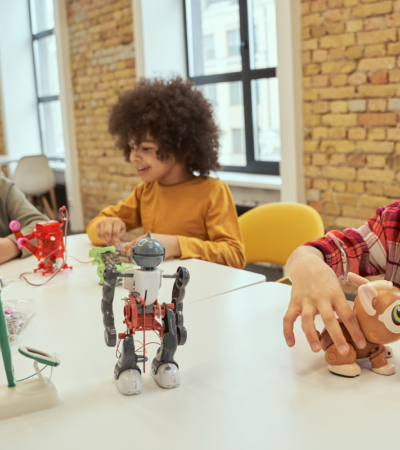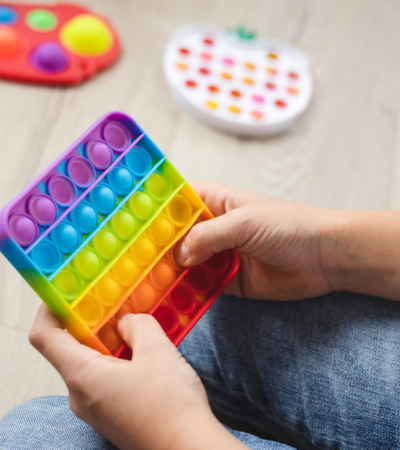
Sustainability is a broad, often daunting field that encompasses so much and evolves so quickly. We may doubt our ability to offer high-quality programming focused on sustainability, or we may simply not know where to start. ALA Editions’ new book, Inspiring Teens, Tweens, and Families to Make a Difference in the World: Programming to Advance the Sustainable Development Goals by Amanda Moss Struckmeyer, gives librarians the tools they need to incorporate sustainability topics into their programming.
Below are a few tips that will be helpful on the sustainability programming journey.
1. Know that sustainability encompasses more than environmental action.
The book is designed around the United Nations’ 17 Sustainable Development Goals (SDGs), which include all areas of sustainability, including world hunger, gender equality, quality education, and, yes, the natural environment. Each of the 17 chapters is devoted to one SDG, and each includes an introduction to the goal so readers can quickly become acquainted with the topic.
2. Reach a wide audience by providing programming for all ages.
In the book, you’ll find at least 16 program ideas for each of the 17 SDGs; each goal is accompanied by a minimum of four teen programs, four tween programs, four family programs, and four passive programs that can be offered at any time. The activities, resources and projects in the text can easily be tailored to a library’s specific size, budget and community make-up.
3. Great news: you don’t have to be an expert on all (or any) of the SDGs to facilitate programs around them.
Choose ideas that will work with programs, clubs or themes you’re already doing. For example, the Density Rainbow project in chapter 6 (Clean Water and Sanitation), in which participants layer colored saltwater of varying densities, could be offered as part of a larger club or program centered around rainbows (see a preview below).
4. Start small by identifying activities that can be incorporated into existing offerings.
If you have a teen volunteer group, consider having them create some of the interactive passive programming items, such as the Greenhouse Gas Match-Up in chapter 13 (Climate Action). Bonus: working on these projects will likely get teens talking and learning about sustainability topics.
5. Leverage community resources.
In addition to programming ideas, each chapter includes potential community partnerships that may contribute to patrons’ experience of that particular SDG. For example, chapter 3 (Good Health and Well-Being) contains recommendations for guest speakers, such as nutritionists and fitness instructors, as well as a suggestion for organizing a library team for a local 5K walk/run.
6. Remember that your goal is to raise awareness, start conversations, and connect patrons with new ideas and resources.
Nobody expects you to deliver expert content on sustainability issues; be proud of what you can offer as you begin to incorporate sustainability into more and more of your offerings.
7. Pick and choose the programs that work for you!
This book isn’t meant to be used cover to cover; it’s intended to be perused and sampled as your programming calendar allows. Patrons are sure to enjoy learning, creating, connecting, and exploring through sustainability themes.
Program sneak peek: Density Rainbow
As mentioned above, this program is part of chapter 6 (Clean Water and Sanitation). You’ll find it in the Family Programs section!
Share the book Water: How We Can Protect Our Freshwater by Catherine Barr, an accessible nonfiction introduction to the water cycle and global water issues. Using the book as a springboard, explore the distinction between freshwater and saltwater by creating “density rainbows.”
You’ll need six identical empty, clear plastic bottles, such as single-use water bottles. Fill each bottle with water and add food coloring to dye it a different color of the rainbow. Add salt to five of the bottles: two teaspoons into the orange water, four teaspoons into the yellow, six into the green, eight into the blue, and ten into the purple. Put the tops on the bottles and shake gently to mix.
Create rainbows by sealing one end of a clear drinking straw with your thumb, then inserting the open end about a half an inch into the red water (which contains no salt). Remove your thumb very briefly, then replace it before moving the straw to the orange bottle, inserting the open end a full inch below the surface. Briefly lift your thumb, then replace it before moving to the yellow bottle, where you’ll insert the open end one and a half inches under water. Continue in this manner through the rainbow. Because of the varying densities of different colors of water, a rainbow is built in the straw!
Families will love this memorable, hands-on activity that opens the floodgates (ha!) to discussions about water.
For more, purchase Inspiring Teens, Tweens, and Families to Make a Difference in the World: Programming to Advance the Sustainable Development Goals from the ALA Store.



